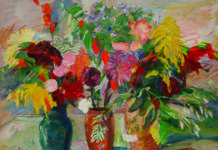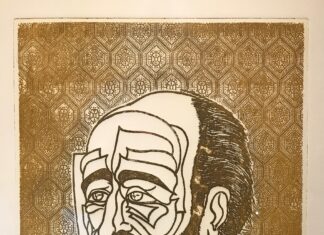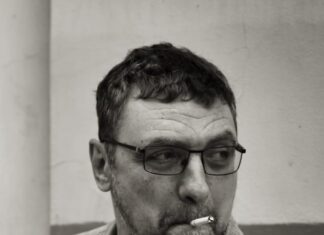By Sadie Stein
NEW YORK (New York Times) — John Derian is standing in front of a 19th-century tomb in the summer rain. We are just outside Boston, in the storied Mount Auburn Cemetery, not far from where he grew up. “Some of my mother’s relatives are in here,” he says. Tall and elegant, Derian seems of a piece with his august surroundings: remote and a bit intimidating. But when he talks, he is warm and funny. At one point, a 71 bus, bound for Cambridge, passes by. “That bus changed my life,” he says wryly.
Since starting out as a designer and purveyor of objects and curiosities in the early ’90s, Derian’s name has been a byword for a slightly morbid, cosmopolitan luxury: a Pierre Bonnard painting viewed through the eyes of Edward Gorey. His three Aladdin’s Cave stores, a row in Manhattan’s East Village, are packed with hand-printed textiles, marble fruit sculptures and antique glass. The decoupage plates that Derian makes and sells take their inspiration from English botanical prints or yellowed love letters. A velvet sofa might have the classical lines of a Hepplewhite relic, but with proportions long enough to accommodate his tall frame. Derian has a healthy respect for both history and comfort.
In reality, however, Derian’s hometown is a far cry from the sepia-tinged world he has created. His working-class upbringing in Watertown was surprisingly Technicolor — Boy Scouts, a paper route, hide-and-seek — but Derian is ambivalent about going home; his family was bewildered by his artistic interests and, like many sensitive kids, he came to realize how isolated his childhood was. He moved immediately after high school — first to Boston, then to neighboring Cambridge, then to New York, where he has lived and worked ever since. And yet it’s clear that Derian’s early life influenced his idiosyncratic brand of creativity. As a young man, Derian immersed himself in painting and craft, activities that would later find expression in his shops, which feel like private hiding places filled with secret, hoarded objects.
Derian’s mother’s family is Scottish; his paternal grandparents were Armenian. His father’s mother lived with the family until he was 10, “but her past,” he says, “was always kind of a mystery.” Derian’s childhood was full of such secrets and intriguing characters: There was the funeral home on the corner run by redheaded sisters; the black-clad neighbor in perpetual mourning for her son; the boarders who lived upstairs. “There was a Russian guy named Arthur who stayed in our attic for 40 years,” Derian recalls, as we make our meandering way to the home where he was raised. “When my grandmother was alive, they would play cards and do shots. He’d boil feta cheese until all the salt was gone, and walk around in his underwear saying, ‘I am DEE-sgusted! They do what they want!’ because there were six little kids, causing trouble. I think he might have been gay.”
Derian has a keen eye for detail, especially macabre quirks; he is also generous and kind. Near the Cambridge border, we stop at Star Market, a food store where his father was a manager for 40 years. Derian was the only one of his siblings not to work there, yet he has happy memories of playing in the empty aisles on Sundays, and credits his time there for having made him an excellent packer of car trunks.









